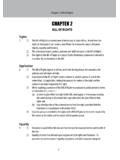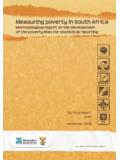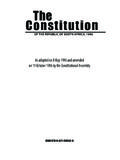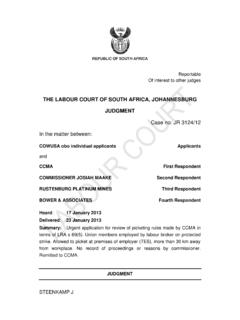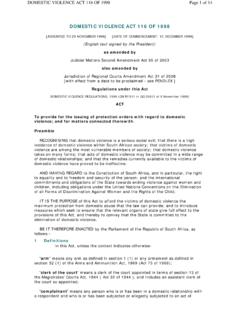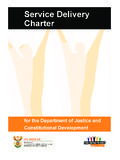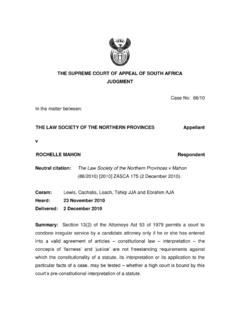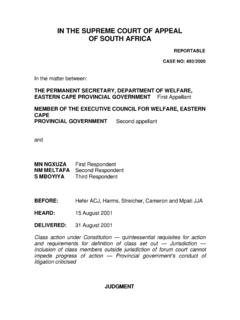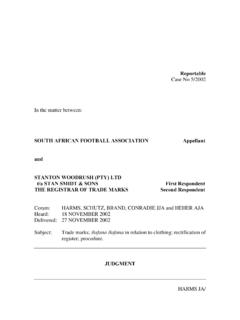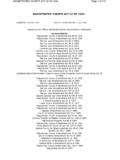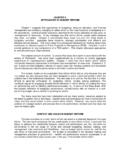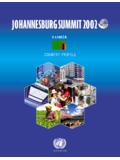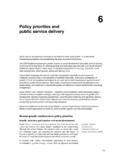Transcription of PROCESS AND STRUCTURES FOR THE 2016 BUDGET
1 PROCESS AND STRUCTURES FOR THE 2016 BUDGET . 1. The BUDGET PROCESS aims to ensure that resources are allocated to meet South Africa's political priorities and to improve the quality and effectiveness of spending within sustainable fiscal limits. Through the BUDGET PROCESS , a large number of public institutions plan, collaborate, negotiate and decide together on a comprehensive plan for spending public resources over the next three years. 2. This memorandum explains the processes that will be followed within the national executive to arrive at the tabling of the 2016 BUDGET in parliament.
2 It also describes the political STRUCTURES that will lead this PROCESS and the parameters that will define expenditure control and decisions to allocate resources. Greater detail is given in the MTEF technical guidelines: For the Preparation of Expenditure Estimates for the 2016 Medium Term Expenditure framework (MTEF). FISCAL CONSTRAINTS AND EXPENDITURE PLANNING. 3. The 2016 BUDGET will be prepared in a constrained fiscal environment. Government has committed itself to explicit limits on aggregate expenditure over the next two years.
3 As a consequence there will be no general addition to baselines in 2016 /17. The BUDGET PROCESS for the first year of the framework will seek to align existing budgets more closely with policy objectives and unanticipated cost pressures. 4. In effect, this implies shifting towards a two-year BUDGET cycle in which fiscal space is available in the year after the next appropriation. The 2016 /17 appropriation will reflect estimates published in the 2015 BUDGET , subject to technical adjustments and targeted allocations that respond to the public-sector wage settlement.
4 There may be scope to begin augmenting baselines to support Medium Term Strategic Framework (MTSF) priorities from 2017/18 onwards. The outcome of the public sector wage negotiations has significantly constrained the envelope even in the outer years of the framework. Depending on economic growth and revenue outcomes, it is expected that resource constraints will be less binding from 2018/19 onwards. 5. In this context, government will seek to improve the effectiveness of long-term expenditure planning. Allocations will be restrained in the outer years of the framework to preserve fiscal space for new policy priorities.
5 The 2016 BUDGET PROCESS will give greater focus and structure to identifying these priorities, developing implementation plans and generating realistic cost estimates. In-depth assessments of baseline allocations will also be undertaken to shift resources within existing envelopes. 6. Efforts to contain compensation budgets will receive particular attention. Resources will not be made available for the expansion of funded posts in 2016 /17, and possibly beyond. Where non-critical funded posts have not been filled for an extended period of time, resources may PROCESS AND STRUCTURES FOR THE 2016 BUDGET Page | 1.
6 Be withdrawn. The Department of Public Service and Administration and National Treasury will work together to strengthen controls on compensation expenditure and limit the scope for new appointments and grade creep . National Treasury will establish explicit limits on personnel expenditure within each BUDGET vote and these will be strictly enforced within the financial management and HR systems environment. Benchmarks for provincial spending on personnel will also be closely monitored to sustain controls already in place. OBJECTIVES AND SCOPE OF THE BUDGET PROCESS .
7 7. The substantive objectives of the BUDGET processes are: Fiscal sustainability: achieving an appropriate balance between revenue, expenditure, the debt level and other fiscal aggregates in a manner that promotes economic stability over the economic cycle and ensures a sustainable fiscal position. Effective allocation of resources: achieving an allocation of limited resources that reflects the political and policy priorities of government and which takes account of evidence of programme effectiveness. Value for money: resource allocation through the BUDGET and new approaches to procurement must contribute to the constitutional requirement that efficient, economic and effective use of resources must be promoted.
8 8. PROCESS objectives for the 2016 MTEF include: Extending the quality of long-term expenditure planning by giving greater weight to resource allocation in the outer years of the framework. Improving the political and technical interface in relation to the BUDGET , so that political priorities are translated into BUDGET allocations, while ensuring that technical analysis and evidence informs political prioritisation. Strengthening intergovernmental engagement to improve budgeting for areas of concurrent national and provincial legislative competence and functions assigned to local government, as required by the Constitution.
9 9. The BUDGET PROCESS is organised to allocate resources across four dimensions: (a) The principle of function budgeting which clusters institutional activities and resource allocation around policy objectives or outcomes. (b) The economic allocation of spending, which balances resources between the purchase of inputs such as human capacity (compensation), physical assets (capital spending) or goods and services. (c) The Constitution requires that resources are shared equitably between the three spheres of government. The BUDGET includes a PROCESS of intergovernmental fiscal planning through which national, provincial and local government cooperate to design intergovernmental fiscal instruments and allocate resources towards common objectives.
10 PROCESS AND STRUCTURES FOR THE 2016 BUDGET Page | 2. (d) A consolidated BUDGET approach to the public finances which integrates departmental budgets of national and provincial government with the financing of agencies, entities and other institutions that are largely funded by the fiscus. FIGURE 1: FOUR DIMENSIONS OF THE BUDGET . 10. Function-budgeting serves two purposes: It is a method of categorising expenditure based on the policy objectives which the expenditure is intended to achieve. It is a framework in terms of which the BUDGET PROCESS is organised.
